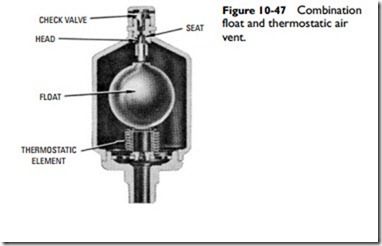Pipeline Valves and Controls
Pipeline valves and controls are used to regulate the temperature, pressure, or flow rate of the steam or water in the lines. Some valves (e.g., check valves) deal with only one of these functions; other valves are designed to handle more than one function.
Details about the design and construction of valves and the methods used for servicing, repairing, and installing them are found in Chapter 9 (V“ alves and Valve Installation). This chapter is limited to a description of seven of the more common valves and control devices used in steam and hydronic pipelines. They are:
• Temperature regulators
• Electric control valves
• Water-tempering valves
• Hot-water heating control
• Flow control valves
• Electric zone valve
• Balancing valves, valve adaptors, and filters
Temperature Regulators
Temperature regulators are used for many heating and cooling applications, including small-flow instantaneous heaters or coolers (shell-and-tube or shell-and-coil heat exchangers), small storage or tank heaters, and similar installations.
The Spirax Sarco Type 25T temperature regulator shown in Figure 10-48 is a diaphragm-operated valve used for regulating temperature in a variety of different process applications.
Before start-up, the main valve is normally in a closed position and the pilot valve is held open by spring force. The steam enters the orifice inlet, passes through the pilot valve and into the diaphragm chamber, and then out the control orifice. Control pressure builds up in the diaphragm chamber when the flow through the pilot valve exceeds the flow through the control orifice. This build-up in pressure opens the main valve.
The bulb of the temperature regulator is immersed in the medium being heated. At a predetermined temperature setting, the liquid in the bulb expands through the capillary tubing into the bellows and throttles the pilot valve. The main valve will deliver the required steam flow as long as the control pressure is maintained in the diaphragm chamber. The main valve closes when heat is no longer required.
